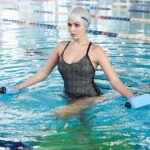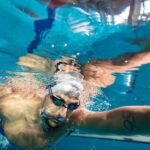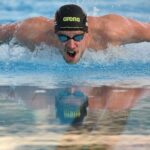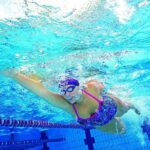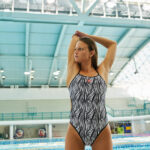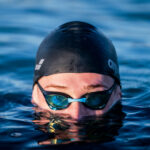9 Swimming Drills for Beginners to Improve Your Technique
So, you’ve decided to leap into the wonderful world of swimming! Whether you choose to swim in competitions, open-water events, triathlons, or you want to participate in the sport for your health, you’ve come to the right place. It all starts with good training so you can improve in the sport of swimming.
Today, we’ll give you some of the best swimming drills for beginners so you can improve your swimming technique.
9 Swimming Drills for Beginners
Swimming is one of the best ways to get in shape and stay healthy. Some of the benefits of swimming include that it works your whole body, it is a low-impact sport, it can improve your sleep, and it can positively affect your mood.
Below, we have nine swimming drills for beginners that will help you get started in the sport of swimming. We’ve broken the drills into sets that focus on specific elements of your swimming technique: body position, stroke, kicking, and streamlining.
Most of the drills listed below are freestyle drills. Freestyle, also known as the front crawl, is the stroke beginner swimmers should master before moving on to the other strokes.
However, in some of the swim workouts, we’ve given variations of the drill if you want to train another stroke like backstroke, butterfly, or breaststroke.
Drills to Develop Good Body Position
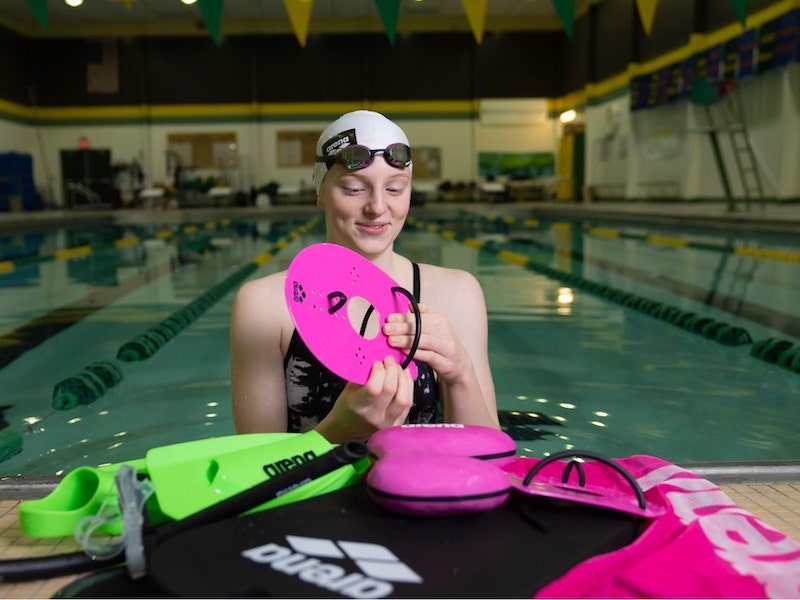
Body position is one of the first things you should think about when you start swimming. Good body position will help reduce drag, so you can swim faster and for a longer amount of time while using less energy. Below are three great swimming drills for beginners to improve their body position.
Drill #1: Swim With a Pullbuoy
A pullbuoy is a swim training tool that is placed between your legs and acts as a flotation device to keep your hips high in the water. The benefit of swimming with a pullbuoy as a beginner is that you can develop the feeling of having your hips high in the water.
For this drill, swim four sets of 25 yards at about 70% effort. Rest for 20 seconds between each lap.
After you have the freestyle stroke down, try swimming other strokes with a pullbuoy. It might seem challenging at first, especially in leg-driven strokes like breaststroke and butterfly, but it will help you focus on your hands and arms’ role in these strokes. Try not to use your legs at all when you swim with a pullbuoy.
Drill #2: Swim With a Snorkel
A swim snorkel is different than a snorkel designed for recreational snorkeling. The benefit of a swim snorkel is that you can focus on your stroke without raising your head to breathe.
Take your swim snorkel and swim four sets of 25 yards at about 70% effort in this drill. Rest for 20 seconds between each lap.
As you swim, focus on how your body is moving through the water. Make sure your hips are high in the water, and your head, neck, and spine stay in a straight line. As you find the correct body position, you’ll feel yourself beginning to swim faster while exerting less energy.
Drill #3: Swim With Your Head Up and With High Elbows
This drill is designed to train the position of your hips as you swim. When you lift your head, your hips will naturally drop. The goal of this drill is for you to swim with your head out of the water while keeping your hips up. To accomplish this, you need to have a strong, fast flutter kick, and you will need to keep your core tight.
Swim four sets of 25 yards at 80% effort with your head up and your elbows high. Rest for 30 seconds between each lap.
Then, swim freestyle with your regular technique for two sets of 25 yards at 70% effort. Rest for 20 seconds between each lap.
Notice how much easier it is to keep your hips high in the water when you switch back to the regular freestyle technique. You might even notice that you’re able to swim much faster when you have your head down and your neck in a neutral position. Your hips should sit higher in the water as you practice this drill, and your core strength should increase.
Drills to Practice Your Stroke
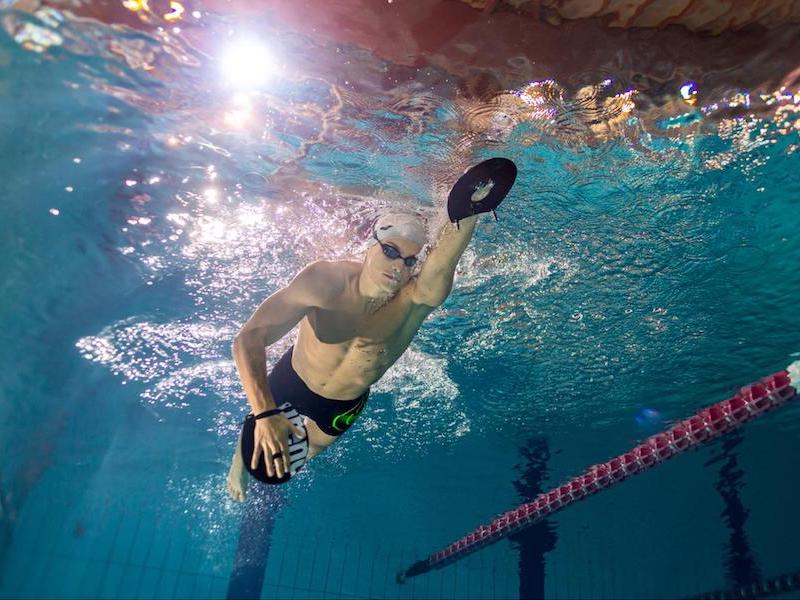
Your stroke is the primary source of propulsion in the water, so you need to develop a powerful and smooth stroke technique. As you begin to perfect your technique, you will notice how much power you get from each stroke you take. Below we have three swimming drills for beginners to help you improve your stroke.
Drill #4: Swim With Paddles
Swim paddles provide additional resistance to your stroke, which helps you to develop strength. You can train using paddles for any of the four strokes.
Swim four sets of 50 yards at 75% effort. Rest for 20 seconds between each set.
As you perform this drill, focus on a smooth and powerful pull-through. The additional resistance of the paddle will help you feel how your hand is moving through the water so you can make adjustments to your stroke if needed.
Drill #5: Catch-Up Swim Drill
You can practice this drill for freestyle or backstroke.
When you take your first stroke, let your leading hand stay extended out in front of you until your other hand completes the stroke. Do not start your next stroke until your other hand enters the water in front of you next to your original leading hand. Repeat the process.
Focus on a solid kick, powerful pull-through, and good body position so you can glide through the water.
Perform four sets of 25 yards at 70% effort. Rest for 20 seconds between each set.
Drill #6: Single-Arm Swimming Drill
Swim freestyle or backstroke with one arm at a time, leaving your other arm at the side of your body. Isolating one arm will help you focus on a smooth hand entry into the water and a strong pull. It will also help you to balance the strength and technique of each arm individually.
Perform four sets of 25 yards at 70% effort. Rest for 20 seconds between each set.
Kick Drills to Strengthen Your Legs
Your kick will provide you with additional propulsion and also aids in keeping your hips high in the water. Both of these are beneficial to improving your swimming technique. The swimming drills for beginners below will help you achieve a great swim kick.
Drill #7: Use a Kickboard
Kickboards are amazing tools that allow you to train your legs. You can use a kickboard to train your flutter kick, dolphin kick, or breaststroke kick:
- For your flutter kick, focus on a high-tempo kick that is just beneath the surface of the water.
- When you train your dolphin kick, focus on strong downward and upward thrusts to drive you along.
- For the breaststroke kick, focus all your strength on each kick as you bring your legs together and glide through the water.
Perform four sets of 25 yards at 100% effort. Rest for 30 seconds between each set.
Drill #8: Kick While Sculling
Sculling is the back and forth motion you make with your hand that displaces water and keeps your body near the surface. For this drill, place both hands out in front of you and perform the sculling motion with each hand to keep your upper body high in the water. While you do this, use the kick of your choice to propel yourself across the pool.
Perform four sets of 25 yards at 100% effort. Rest for 40 seconds between each set.
Drills to Improve Your Streamline

As a beginner, it might come as a surprise to learn that the fastest part of a swimming lap is during the underwater streamline phase that comes after your starts and turns. The reason for this is because you’ve just taken a powerful push off the wall, and then your body is placed into a body position that reduces drag.
A good streamlined position involves keeping a straight body position from the head through the spine. Your arms will be extended out in front of you, and you should squeeze your head between your biceps to keep a tight position. Point your toes behind you. The streamline drill below will help you get the hang of a proper streamline position.
Drill #9: Push Off the Wall and Glide
To practice the basic form of streamlining, push off the wall in the streamline position and glide until you stop moving. Make adjustments to your position and notice how far you go each time. Place markers on the side of the pool to measure your distance and track your improvement.
Perform this drill 10 times and measure your distance with each repetition.
Once you feel that you have a good gliding motion, try adding a dolphin kick to your push off the wall and see how much power you can get out of it!
The Best Way to Improve Is to Keep Practicing
It’s time to take your new swim drills to your local pool so you can begin to improve your swimming skills. Remember, as you practice the exercises above, focus on each element of your swim stroke they are designed to train. Your swimming will see improvement as you focus and practice developing good body position, proper stroke mechanics, excellent kicking technique, and a solid streamline.
If you’re new to the sport of swimming and don’t have a training suit yet, be sure to take a look at arena swim’s line of suits for men and women.
Written by:
Harrison Howarth
Harrison is a freelance writer with a background in competitive aquatic sports. His love for water polo and swim, combined with his passion for writing and education, drives him to continue teaching and inspiring individuals to participate in aquatics.
